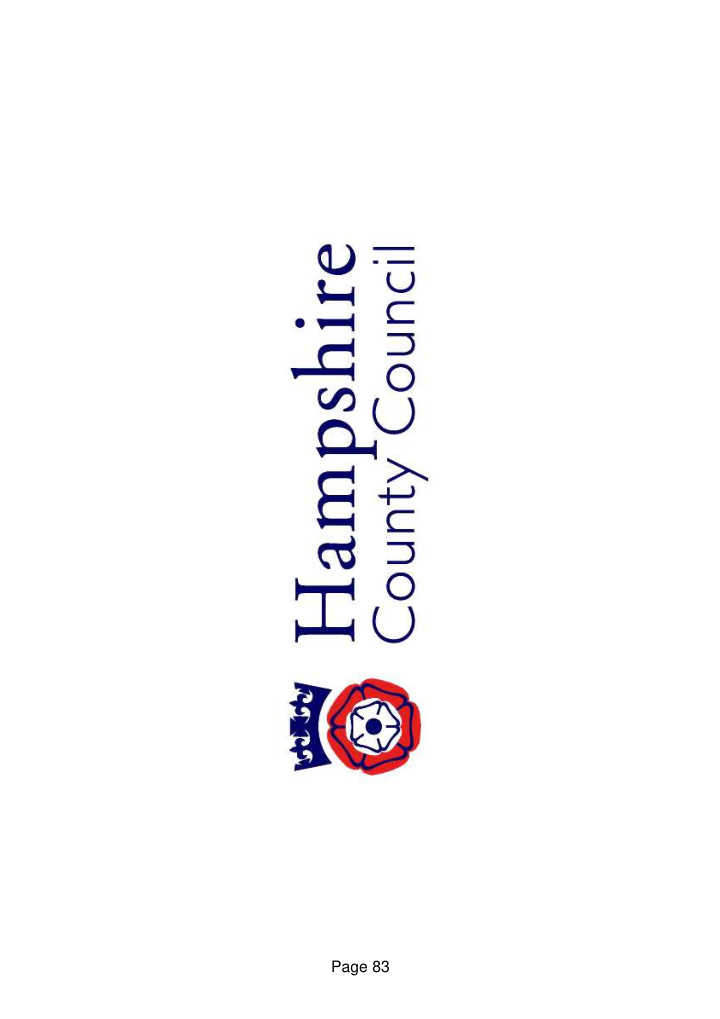



Page 83
The Basingstoke Canal The Basingstoke Canal • Built 1794 – 1798 37 miles across Surrey & Hampshire - from Woodham Junction (R. Wey) to Basingstoke • 32 miles now owned by Surrey and Hampshire County Councils – almost exactly half each • Derelict by 1960 – purchased as land for public recreation and restored as a navigation largely by volunteer labour by 1991 Page 84
Key Assets Key Assets • 32 miles of channel and towpath • 29 operational locks (plus one abandoned chamber), 1 dry-dock • 3 aqueducts • 1 tunnel (non-operational) • 142 sections raised on embankment Page 85 • 48 cuttings • • 62 culverts - watercourses and services passing beneath the Canal 62 culverts - watercourses and services passing beneath the Canal • 3 pumping systems • 26 feeders, sluices or weirs • 109 bridges – mostly maintained as part of road or rail networks • Approx 40,000 trees • Canal Visitor Centre & office, 2 workshop/yards • 3 Surrey Canal Cottages
Characteristics Characteristics • Well used public resource - 1.5million visitors per year mostly on foot, bicycle or kayak • SSSI – most bio-diverse freshwater body in England & Wales for aquatic plants and dragonflies plus important bat habitat Page 86 • Flood risk - if locks, culverts and embankments are not well maintained and regularly inspected • Well supported locally – more than 3500 volunteer days per year • Navigational challenges – lack of adequate water supply (ever since construction) cost of retaining navigation
The Partnership he Partnership • Funding Partnership: 2 counties and 6 riparian districts via a Joint Management Committee (JMC) called the Basingstoke Canal Authority • Revenue budget is approximately £715k p.a. • Generates approximately 25% of its revenue from on site activities Page 87 • HCC and SCC contributing £154k each (approx. 50%) with 6 riparian districts (2 in Hampshire and 4 in Surrey) meeting the rest • Major capital investment from two counties with initial £768k allocated by each owner spent on repairs and a further £2m each in 2012 to address asset management improvements • Current funding and operating model may not be sustainable
Future Options uture Options • SCC and HCC looking jointly at how the Canal could be managed in the future • External waterways consultancy used to examine the value of the canal together with a wide range of options for its management Page 88 • Work to date has included key members, stakeholders and partners who have been directly involved in the process • Following JBA’s work officers now in discussion with potential partner organisations including the Canal and River Trust (custodians of the national inland waterways network) • Currently examining potential business case linked to alternative options prior to coming back to members with request to go to detailed feasibility.
Next Steps Next Steps • Currently assessing potential costs and benefits associated with practical options (HCC and SCC jointly assessing baseline figures) • Report back to members scheduled for summer 2016 • Report will highlight overview of options and seek approval to move to Page 89 detailed feasibility on one or two preferred options. detailed feasibility on one or two preferred options. • JMC will be informed and all stakeholders as part of the ongoing discussion informing that report • Staff briefings and consultation will take place to ensure they are aware of emerging proposals
This page is intentionally left blank
Recommend
More recommend